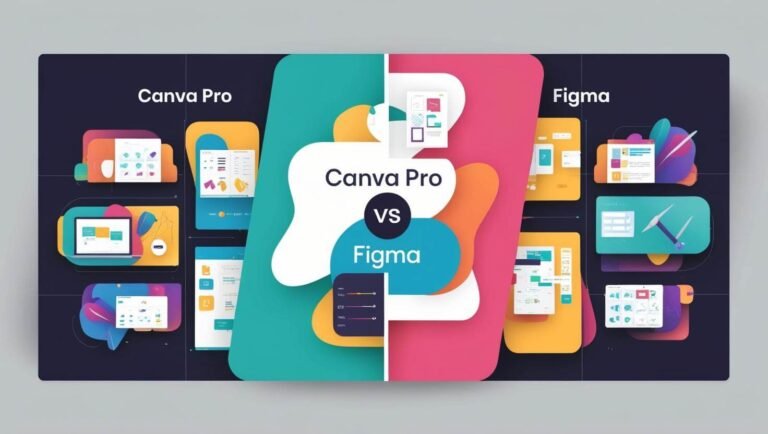In today’s digital world, compelling visuals are no longer a luxury but a necessity. Whether you’re a budding entrepreneur, a diligent student, a savvy marketer, or a passionate freelancer, the ability to create eye-catching designs can significantly elevate your projects. But what if your budget is tight? The great news is that the internet is brimming with powerful free design tools online that can help you produce professional-quality graphics, edit photos, and even design user interfaces without spending a dime. This guide will walk you through the best options available, so you can pick the perfect tool for your creative endeavors.
Why Opt for Free Online Design Tools?
The appeal of free design tools online is multifaceted. For starters, they eliminate the financial barrier to entry, making design accessible to everyone. This is especially crucial for students, startups, and non-profits. Beyond cost, many of these tools are web-based, meaning no hefty downloads or installations are required, and you can access your work from any device with an internet connection. Many also emphasize ease of use, offering intuitive interfaces and vast libraries of templates that empower even design novices to create stunning visuals quickly. At ToollyPro, we believe in democratizing access to great software, and these free design platforms are a testament to that spirit.
Key Features to Look for in Free Design Tools Online
When evaluating free design software for beginners or even for more experienced users looking for quick solutions, consider these factors:
- Ease of Use: Does it have an intuitive interface? Are there ample tutorials or community support?
- Feature Set (Free Tier): What core functionalities are available without paying? Does it cover your primary needs (e.g., template variety, export options, layer support)?
- Template Availability: A good selection of pre-designed templates can significantly speed up your workflow.
- Export Options: Can you export in common formats (JPG, PNG, PDF, SVG) and at decent resolutions?
- Collaboration Features: If you work in a team, look for tools that allow for easy sharing and collaborative editing.
- Learning Curve: How quickly can you become proficient with the tool?
- Limitations of the Free Plan: Understand any restrictions, such as watermarks, limited assets, or reduced functionality, and ensure they are acceptable for your use case.
For more insights on picking software, check out our guide on How to Choose the Right Software for Your Needs.
Our Top Picks: The Best Free Design Tools Online
After extensive research and considering user feedback, here are our top recommendations for free design tools online that deliver exceptional value:
1. Canva: The All-in-One Design Powerhouse

Canva has revolutionized the design landscape by making graphic design accessible to millions. Its drag-and-drop interface, coupled with an enormous library of templates, photos, elements, and fonts, makes it incredibly easy to create everything from social media posts and presentations to flyers and simple videos.
Key Features (Free Plan):
- Over 250,000+ free templates.
- Hundreds of thousands of free photos and graphics.
- Invite members to your team and collaborate in real-time.
- 5GB of cloud storage.
- Wide range of design types (social media, marketing, documents, etc.).
Pros & Cons:
- Extremely user-friendly, ideal for beginners.
- Massive library of free assets and templates.
- Good collaboration features.
- Versatile for various design tasks.
- Some of the best assets and features are locked behind the Pro subscription.
- Less control for intricate design work compared to professional software.
- Video editing capabilities are basic in the free version.
Ideal For: Beginners, marketers, small business owners, educators, and anyone needing to create a wide variety of designs quickly without a steep learning curve. It’s one of the best free graphic design software online for general purposes.
2. Figma: Collaborative UI/UX Design Champion (Free Tier)

Figma is a professional-grade interface design tool that has gained immense popularity for its collaborative features and powerful vector editing capabilities. Its generous free tier makes it an excellent choice for individuals and small teams diving into UI/UX design, wireframing, and prototyping.
Key Features (Free “Starter” Plan):
- 3 Figma and 3 FigJam files.
- Unlimited personal files.
- Unlimited collaborators.
- Plugins and templates.
- Mobile app for mirroring.
Pros & Cons:
- Professional-grade vector editing and prototyping.
- Real-time collaboration is seamless.
- Cross-platform (browser-based, with desktop apps).
- Extensive community resources and plugins.
- Steeper learning curve than Canva, especially for non-designers.
- Free plan limited to 3 active Figma/FigJam files (though unlimited personal drafts).
- Can be resource-intensive on older computers.
Ideal For: Aspiring and professional UI/UX designers, web designers, app developers, and teams needing robust collaboration for interface projects. A top pick for free UI UX design tools online.
Learn more about Figma’s features on their official website.
3. Photopea: The Online Photoshop Alternative
If you’re looking for a powerful free online photo editor that mirrors many of Adobe Photoshop’s functionalities, Photopea is your go-to. It runs directly in your browser and supports PSD, XCF, Sketch, XD, and CDR formats, making it incredibly versatile for advanced image manipulation.
Key Features (Free Plan):
- Supports layers, masks, blend modes, and adjustment layers.
- Wide range of tools: brushes, healing, clone stamp, paths, etc.
- Opens and saves PSD files.
- No registration required for basic use.
- Supports various file formats including RAW.
Pros & Cons:
- Very powerful for a free, browser-based tool.
- Familiar interface for Photoshop users.
- Excellent file format compatibility.
- No account needed to start.
- Interface can feel cluttered and less polished than some modern apps.
- Relies on ads in the free version (can be distracting).
- Performance can vary depending on browser and computer specs for complex tasks.
Ideal For: Photographers, graphic designers, and anyone needing advanced photo editing capabilities without a Photoshop subscription. A solid choice for experienced users looking for a free, accessible alternative.
4. Pixlr: Versatile Photo Editing Suite
Pixlr offers a suite of online photo editing tools, primarily Pixlr X (for quick and easy edits) and Pixlr E (for more advanced editing). This dual approach caters to both beginners and users who need more control, making it a flexible free online photo editor.
Key Features (Free Plan):
- Pixlr X: Simplified interface, one-click edits, templates.
- Pixlr E: More comprehensive tools, layers, effects similar to desktop editors.
- AI-powered tools (e.g., background remover – limited free uses).
- Supports various image formats.
- Mobile apps available.
Pros & Cons:
- Two distinct interfaces cater to different skill levels.
- Good range of basic to intermediate editing tools.
- Quick to load and use for simple tasks.
- Many advanced features and AI tools are heavily restricted or premium.
- Ads in the free version.
- User experience can sometimes feel less integrated between X and E.
Ideal For: Users needing quick photo touch-ups, social media graphics, or moderately complex image edits. Good for those who want an option between Canva’s simplicity and Photopea’s complexity.
5. Vectr: Simple Vector Graphics Editor
Vectr is a free, simple, and intuitive online tool for creating vector graphics. While not as feature-rich as Adobe Illustrator or Figma’s vector capabilities, it’s an excellent starting point for basic vector work like logos, icons, and simple illustrations. It’s a great option if you’re searching for an “online logo maker free” with more manual control.
Key Features (Free Plan):
- Core vector editing tools (pen, shapes, paths).
- Real-time collaboration and sharing.
- Steep learning curve is relatively shallow.
- Web-based and downloadable desktop app.
- Tutorials available on their site.
Pros & Cons:
- Very easy to learn and use, great for beginners in vector design.
- Clean, uncluttered interface.
- Good for simple vector tasks and collaborative projects.
- Completely free.
- Limited advanced features compared to professional vector software.
- May not be suitable for highly complex illustrations.
- Fewer export options than some competitors.
Ideal For: Beginners in vector graphics, creating simple logos, icons, website mockups, or for collaborative projects that don’t require advanced vector functionalities.
Looking for more logo tools? Check out our review of the Best Logo Design Software.
Other Notable Free Online Design Tools
While the tools above are our top picks, the world of free design tools online is vast. Here are a few others worth a mention:
- BeFunky: Offers a photo editor, collage maker, and graphic designer with a user-friendly interface and a decent set of free features.
- SVGator (Free Plan): If you need to create simple SVG animations, SVGator’s free plan allows for a limited number of animated exports per month.
- Gravit Designer (Free Plan – Klex): While the main Gravit Designer has shifted its model, its simpler counterpart, Klex, still offers some free design capabilities for quick tasks. (Note: Always check current offerings as they can change).
Choosing the Right Free Design Tool for You
The “best” free design tool online truly depends on your specific needs and skill level:

- For all-around graphic design & social media: Canva is likely your best bet.
- For UI/UX design and collaboration: Figma’s free tier is unmatched.
- For advanced photo editing (Photoshop-like): Photopea stands out.
- For quick photo edits and varied options: Pixlr offers good flexibility.
- For simple vector graphics and logos: Vectr is a great starting point.
We recommend trying out a couple that seem to fit your requirements. Since they are free and online, experimenting is easy and risk-free! Remember, even free design software for beginners can produce highly professional results with a bit of practice and creativity.
Conclusion: Unleash Your Creativity Online!
The availability of high-quality free design tools online has democratized design, empowering everyone to bring their creative visions to life. From crafting compelling social media posts with Canva to designing intricate user interfaces with Figma, or performing advanced photo manipulations with Photopea, there’s a free tool out there for almost every need. By understanding their strengths and limitations, you can select the perfect platform to enhance your projects, build your brand, or simply explore your artistic side.
We’ve given you a roadmap, showcasing tools that exhibit great Experience, Expertise, Authoritativeness, and Trustworthiness in the free design software space. Now it’s your turn!
Dive in, explore these amazing free design tools, and unleash your creativity today! Which free online design tool is your favorite, or did we miss one you love? Share your thoughts and experiences in the comments below – we’d love to hear from you!



